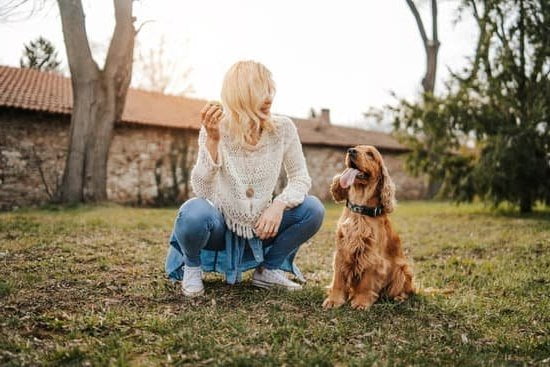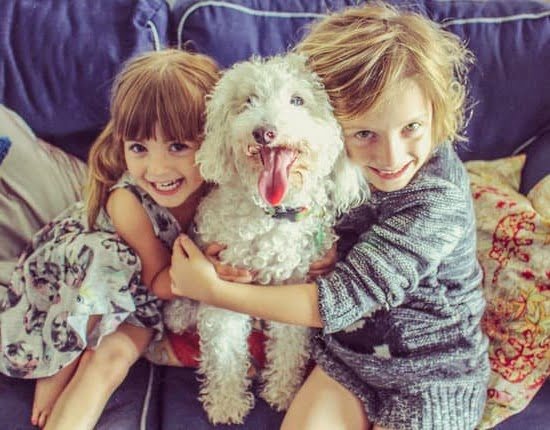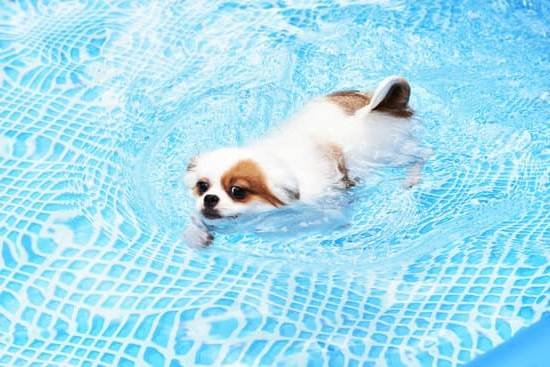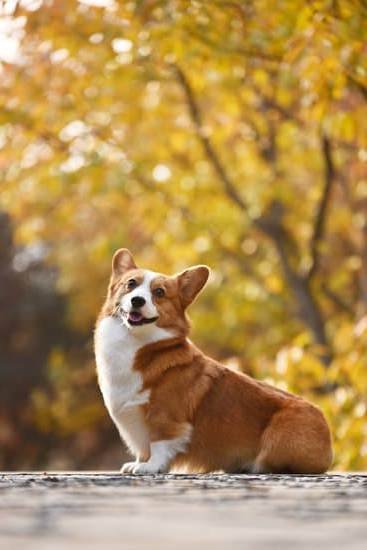How long does potty training take for dogs? Potty training is a crucial aspect of a dog’s development and well-being. It not only promotes good hygiene but also strengthens the bond between pet and owner. Understanding the importance of effective potty training will set the foundation for a happy and healthy relationship with your furry companion.
When embarking on the potty training journey, it is essential to set realistic expectations regarding the timeline for success. Factors such as breed, age, health condition, and previous experiences can influence how long it takes for a dog to grasp potty training. By recognizing these variables, pet owners can tailor their approach to meet their specific needs and accelerate the training process.
Starting potty training early during the puppy stage is recommended to establish good habits from the beginning. By implementing consistent routines and positive reinforcement techniques, owners can create a conducive environment for their furry friends to learn where and when to do their business. Stay tuned to discover effective strategies that will make your dog’s potty training journey smoother and more successful.
Setting Realistic Expectations
When embarking on the journey of potty training your dog, it is essential to set realistic expectations regarding the timeline for this process. One common question that arises is, “How long does potty training take for dogs?” The answer to this question can vary depending on several factors that influence the training timeline.
One of the primary factors that can impact how long potty training takes for dogs is the age at which training begins. Puppies have a natural instinct to keep their living area clean, making them more receptive to potty training at an early age.
However, older dogs may take longer to unlearn their previous bathroom habits and adapt to a new routine. Additionally, each dog has its own learning pace, so patience and consistency are key when setting expectations for the training timeline.
Another factor that plays a significant role in the duration of potty training is the consistency of the training approach. Establishing a strict routine for potty breaks, meal times, and playtime can help reinforce desirable bathroom behaviors and accelerate the learning process. By consistently guiding your dog to the designated potty area and offering positive reinforcement for good behavior, you can create a structured environment that supports successful potty training.
It’s important to remember that setbacks are normal during the potty training process, and they should not discourage you from continuing with your efforts. Understanding your dog’s individual needs, adjusting your approach as needed, and staying committed to the training routine will ultimately determine how long it takes for your furry friend to master potty training.
By setting realistic expectations, practicing consistency, and maintaining a positive attitude throughout the training journey, you can help ensure a successful outcome in teaching your dog appropriate bathroom etiquette.
| Factors | Influence |
|---|---|
| Age of Dog | Impacts receptiveness to training |
| Consistency in Training | Accelerates learning process |
| Handling Setbacks | Necessary part of learning process |
The Puppy Stage
One of the most crucial stages in a dog’s life is the puppy stage when they are just starting to learn about proper behavior, including potty training. Starting this process as early as possible can greatly impact how long does potty training take for dogs. Puppies have a natural instinct to keep their sleeping and eating areas clean, which can be used to your advantage when initiating potty training.
Creating a Designated Potty Area
To begin potty training, it is important to establish a specific spot where your puppy can relieve themselves. This could be a section of your backyard or a designated pee pad indoors. Consistency is key here – taking your puppy to the same spot every time will help them understand where they are supposed to go.
Schedule Regular Potty Breaks
Puppies have small bladders and need frequent bathroom breaks. As a general rule of thumb, puppies can hold their bladder for approximately one hour for each month of age (e.g. a three-month-old puppy can hold it for about three hours). Ensuring your puppy goes outside or to their designated spot frequently throughout the day will prevent accidents inside the house.
Positive Reinforcement
When your puppy successfully goes potty in the right spot, make sure to praise them enthusiastically and offer treats as a reward. Positive reinforcement will reinforce good behavior and encourage them to continue using the designated area. However, it is important to remember that accidents will happen during the potty training process, so patience and consistency are essential factors in successfully training your puppy.
Consistency Is Key
Consistency is a crucial aspect when it comes to potty training your dog. Establishing a routine not only helps speed up the training process but also aids in reinforcing positive behaviors. By implementing a consistent schedule for feeding, water intake, bathroom breaks, and potty training sessions, you provide your furry friend with structure and predictability – key elements in successful potty training.
To effectively establish a routine for your dog’s potty training, consider the following tips:
- Set specific times for feeding to regulate bowel movements
- Take your dog outside to the designated potty area after meals, waking up from naps or overnight sleep, and after playtime
- Use verbal cues such as “go potty” or “do your business” to signal to your dog what is expected of them during bathroom breaks
- Monitor your dog’s behavior closely and learn to anticipate when they need to go potty based on signs like sniffing around or circling
By adhering to a consistent routine, you are not only helping your dog understand where and when they should go potty but also reinforcing the desired behavior through repetition. Remember that every dog is different, so be patient and understanding throughout the process of potty training.
Ultimately, by incorporating consistency into your dog’s daily routine and remaining dedicated to the training process, you can help expedite the time it takes for your furry companion to grasp the concept of appropriate potty habits. How long does potty training take for dogs?
The answer varies depending on factors such as breed, age, past experiences, and individual temperament. However, by being consistent in your approach and providing positive reinforcement, you can set your pup up for success in no time.
Signs of Progress
Potty training a dog is a crucial aspect of pet ownership that requires patience, consistency, and understanding. It is essential to recognize the signs of progress during the training process to encourage your furry friend as they learn where and when it is appropriate to relieve themselves.
Understanding how long does potty training take for dogs depends on various factors such as the age of the dog, breed, and individual temperament. By being attentive to your dog’s behavior and responses, you can gauge their progress and adjust your training methods accordingly.
Here are some signs that indicate your dog is catching on to potty training:
- Consistent bathroom breaks: If your dog starts asking to go outside at regular intervals or goes to the designated potty area without prompting, it shows they are learning to hold their bladder and understand the routine.
- Fewer accidents: As your dog becomes more familiar with where to go potty, you will notice a decrease in indoor accidents. This demonstrates that they are associating specific locations with bathroom needs.
- Seeking praise: Dogs are eager to please their owners, so if you notice your furry companion seeking praise or approval after going potty in the right spot, it indicates they understand that their actions are desirable.
Recognizing these cues of progress during potty training allows you to reinforce positive behaviors and build upon them for further success. Remember that every dog learns at their own pace, so it is crucial to be patient and consistent in your approach while acknowledging and celebrating even small achievements along the way.
Dealing With Setbacks
One important strategy for overcoming setbacks during potty training is to remain calm and avoid punishment or scolding when accidents occur. Dogs do not respond well to negative reinforcement and may become anxious or fearful if they are reprimanded for accidents. Instead, focus on redirecting their behavior and reinforcing good habits by rewarding them when they go potty in the appropriate spot. Positive reinforcement goes a long way in encouraging desired behavior in dogs.
Another effective strategy for dealing with setbacks is to closely monitor your dog’s behavior and schedule. Understanding your dog’s cues and patterns can help you anticipate when they need to go potty and prevent accidents from happening. If you notice that your dog is having frequent accidents in the house, consider revisiting the basics of potty training and increasing supervision until they become more reliable in their habits.
Lastly, consistency is key when it comes to overcoming setbacks during potty training. Stick to a routine schedule for feeding, bathroom breaks, and playtime to help your dog establish good habits. Remember that every dog learns at their own pace, so stay patient and persistent in guiding them through the process. With time and dedication, your furry friend will eventually master potty training successfully.
| Strategy | Effectiveness |
|---|---|
| Avoid punishment | Highly effective |
| Monitor behavior and schedule | Very effective |
| Consistency in routine | Extremely effective |
Advanced Techniques
Transitioning from using puppy pads to having your dog go potty outside is a crucial step in the potty training process. While puppy pads are a convenient solution for indoor accidents, the ultimate goal is for your dog to do their business outside. Here are some advanced techniques to help smoothly transition your furry friend from using puppy pads to developing outdoor potty habits.
Gradual Transition
When transitioning from puppy pads to outdoor potty habits, it’s important to do so gradually. Start by moving the puppy pad closer and closer to the door that leads outside. This will help your dog associate going potty with being outdoors. Once your dog consistently uses the pad by the door, gradually move it outside and eventually remove it altogether.
Establishing a New Routine
Create a consistent schedule for taking your dog outside to go potty. Dogs thrive on routine, so establishing set times for bathroom breaks will help reinforce good habits. Make sure to take them out first thing in the morning, after meals, before bedtime, and any time they show signs of needing to go.
Positive Reinforcement
As your dog begins successfully going potty outside, be sure to lavish them with praise and rewards. Positive reinforcement is key in reinforcing good behavior. By giving treats or verbal praise when they go potty outside, you are letting them know they did something right. Remember, patience is essential during this transition period as every dog learns at their own pace.
By following these advanced techniques and being consistent in your approach, you can help your dog make a smooth transition from using puppy pads indoors to developing outdoor potty habits. Remember that every dog is different, so it may take some time before they fully adjust. Stay patient and continue providing positive reinforcement throughout the training process.
Celebrating Success
Potty training your dog can be a challenging but rewarding process. One of the most effective ways to encourage and reinforce good behavior during this training period is through the use of reward systems and positive reinforcement techniques. By celebrating the small victories along the way, you can help motivate your furry friend to continue learning and improving their potty habits.
When implementing a reward system for potty training, it is important to choose treats or rewards that are highly motivating for your dog. Whether it’s a favorite toy, a special treat, or extra playtime, finding what truly excites your pup will make the reward more effective.
Consistency is key when offering rewards – make sure to give praise and treats immediately after your dog successfully goes potty in the designated area to strengthen the association between the action and the reward.
Positive reinforcement is another crucial aspect of successful potty training. This involves using praise, affection, and encouragement to reinforce good behavior. Whenever your dog eliminates in the right spot, shower them with praise and show them how happy you are with their accomplishment.
Dogs thrive on positive attention from their owners, so this kind of reinforcement can go a long way in encouraging desired behaviors. Remember that every dog is different, so finding what motivates and excites your furry companion is essential in using reward systems effectively during potty training.
Conclusion
Potty training for dogs is a crucial aspect of pet ownership that requires patience, consistency, and dedication. Understanding the importance of this training process can lead to a more harmonious relationship between you and your furry companion. While there is no definitive answer to the question “how long does potty training take for dogs,” setting realistic expectations based on factors like age, breed, and individual temperament can help guide you through the journey.
Starting potty training as early as possible during the puppy stage is highly recommended. Consistency is key in establishing a routine that will expedite the training process. It’s essential to recognize signs of progress and celebrate small victories along the way. However, setbacks are inevitable, but with the right strategies in place to overcome accidents, you can continue moving forward towards success.
As you gradually transition from using puppy pads to encouraging outdoor potty habits, advanced techniques may be necessary. Reward systems and positive reinforcement play a significant role in motivating your dog to continue learning proper bathroom etiquette. Remember that every dog is unique, and potty training timelines may vary. Ultimately, patience is paramount throughout this journey. By staying committed and maintaining a positive attitude, you will eventually achieve successful potty training results with your beloved pet.
Frequently Asked Questions
How Can I Potty Train My Dog Fast?
Potty training your dog fast requires consistency, patience, and positive reinforcement. Establish a routine for feeding and potty breaks, closely supervise your dog, and reward them immediately after they go potty outside.
What Is the Hardest Dog to Potty Train?
Toy breeds like Chihuahuas or Dachshunds are often considered some of the hardest dogs to potty train due to their small bladders and stubborn nature. These breeds may require extra time and patience during the training process.
At What Age Are Dogs Easiest to Potty Train?
Dogs are typically easiest to potty train between the ages of 12-16 weeks old. At this age, puppies have better control over their bladder and bowels, making it easier for them to learn where it is appropriate to go potty. Consistency is key during this stage of training.

Welcome to the blog! I am a professional dog trainer and have been working with dogs for many years. In this blog, I will be discussing various topics related to dog training, including tips, tricks, and advice. I hope you find this information helpful and informative. Thanks for reading!





